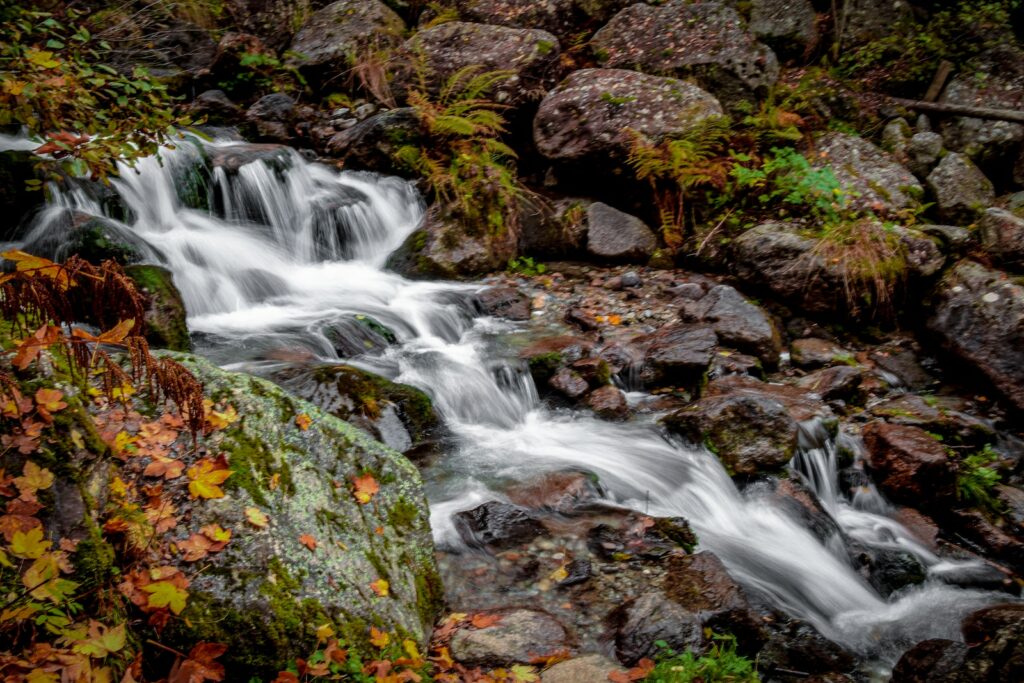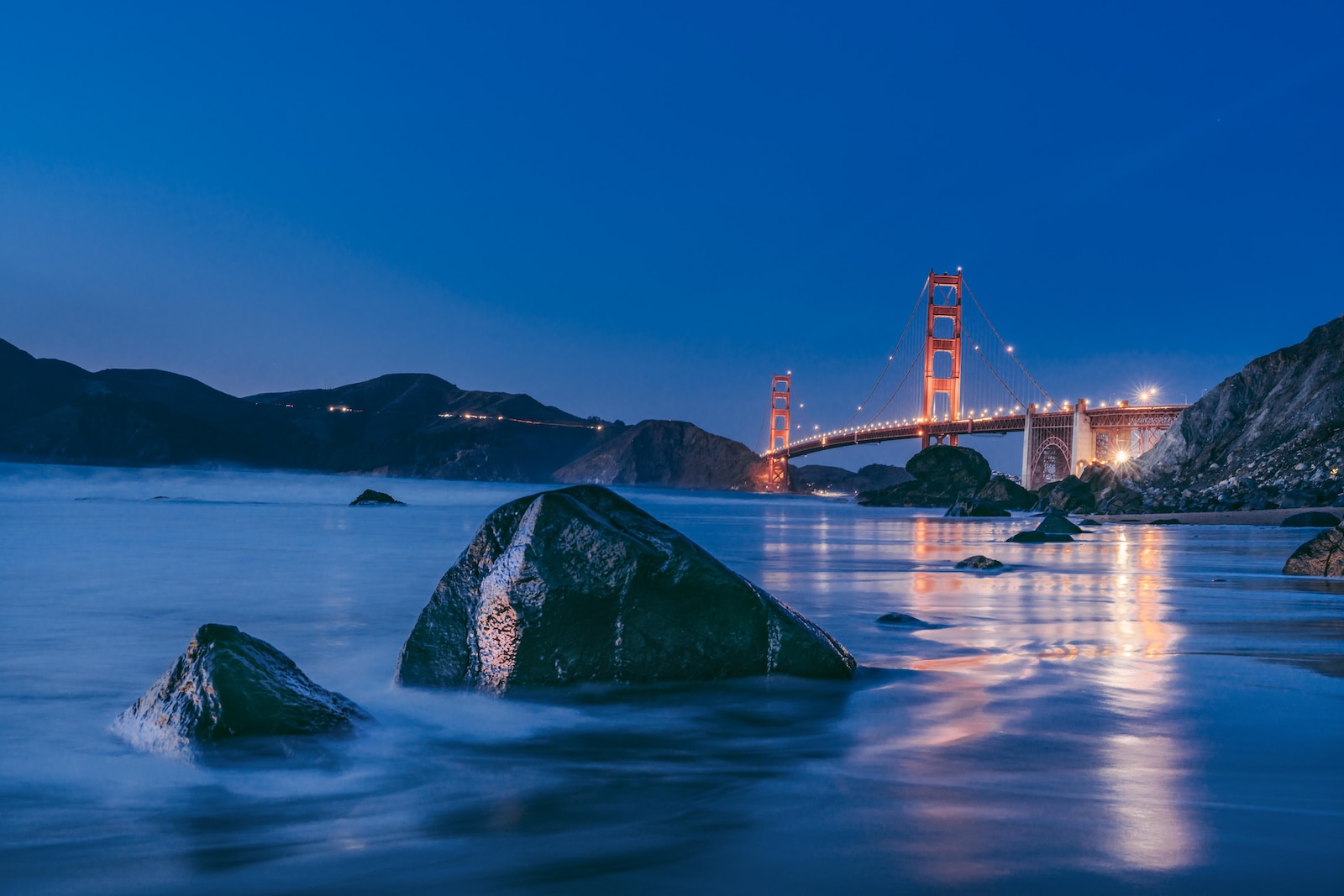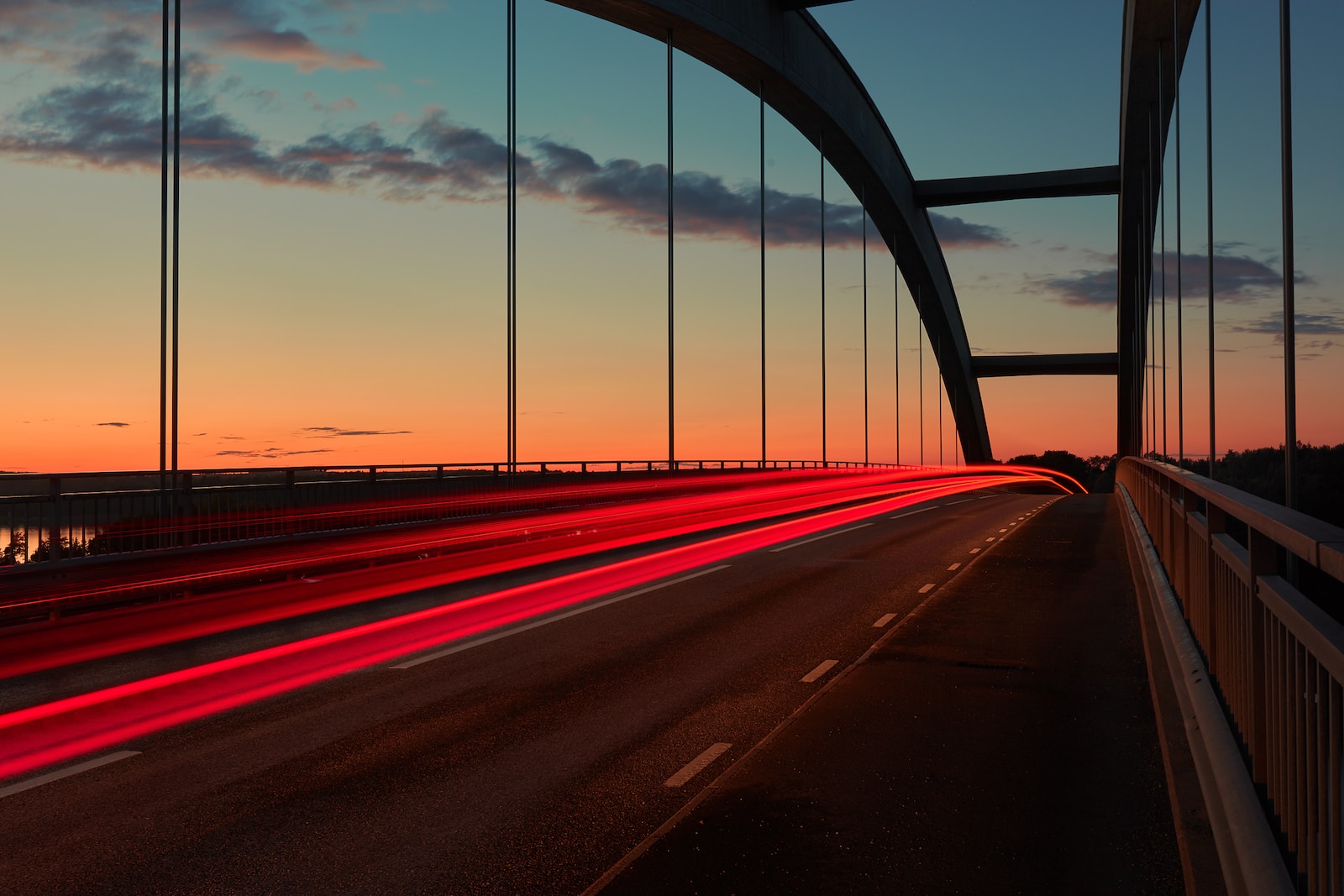Step into a world where time stands still and light dances in mesmerizing ways. Welcome to Enduring Light, your ultimate guide to the captivating realm of long exposure photography. From bustling cityscapes to serene natural landscapes, we will show you how to master the art of capturing breathtaking images that encapsulate the essence of a moment. Join us as we delve into the techniques, equipment, and the boundless creative possibilities of long exposure photography. Brace yourself for a visual journey like no other.
Table of Contents
- The Captivating Beauty of Long Exposure Photography
- Capturing the Wonders of Long Exposure Photography
- The Wonders of Long Exposure Photography
- Frequently Asked Questions
- What is long exposure photography?
- What equipment do I need for long exposure photography?
- What are the best settings for long exposure photography?
- How do I create light trails in my long exposure photos?
- What are some creative subjects for long exposure photography?
- How can I avoid camera shake during long exposures?
- Are there any post-processing techniques for enhancing long exposure photos?
- What are some common challenges in long exposure photography?
- Wrap Up
The Captivating Beauty of Long Exposure Photography
Long exposure photography is an art form that allows photographers to capture stunning images by manipulating light and time. By extending the exposure time, the camera sensor absorbs more light, resulting in unique and mesmerizing effects. This technique is particularly advantageous when photographing subjects that have interesting features that can be emphasized with long exposure techniques. Here, we will explore some captivating subjects that are ideal for long exposure photography and discuss the techniques that can make your photographs truly stand out.
Majestic Waterfalls: Capturing the Veil of Motion
Waterfalls are a favorite subject for photographers due to their dynamic and enchanting nature. With long exposure photography, you can transform the rushing water into a stunning veil of motion. By using a slow shutter speed and a tripod, you can create a silky smooth effect as the water flows down. The resulting image not only showcases the power and beauty of the waterfall but also adds a sense of tranquility and serenity. Experiment with different shutter speeds to achieve the desired effect, and don’t forget to compose your shot with interesting foreground and background elements to enhance the overall impact.
Dazzling Nightscapes: Unveiling the Invisible Stars
Night photography provides a unique opportunity to capture the mesmerizing beauty of cityscapes, landmarks, and starry skies. By using long exposure techniques, you can unveil the invisible trails of light and bring out the details of the night scene. When photographing cityscapes, find a vantage point that offers a great view and set up your camera on a sturdy tripod. Experiment with different exposure times to capture the trails of car lights and the glowing ambiance of the city. To capture starry skies, head to a location away from light pollution, set a long exposure, and marvel at the stunning trails created by the movement of the stars. The longer exposure time allows your camera’s sensor to capture more light, revealing breathtaking details and colors that are otherwise invisible to the naked eye.
Whether you’re photographing waterfalls or nightscapes, it’s essential to pay attention to a few crucial factors. Firstly, shoot in RAW format to retain maximum image information and allow for greater flexibility during post-processing. Secondly, utilize a remote shutter release or the camera’s built-in timer to avoid any camera shake caused by manually pressing the shutter button. Lastly, consider experimenting with neutral density (ND) and graduated neutral density (GND) filters to further enhance your shots. These filters help reduce the amount of light entering the lens, allowing for longer exposure times even in bright conditions and helping to balance the exposure between the sky and the foreground, respectively.
With the endless possibilities of long exposure photography, captivating subjects, and the right techniques, you can create breathtaking images that amaze and inspire. So, grab your camera, extend your exposure time, and delve into the enchanting world of long exposure photography. The results will surely leave you in awe of the enduring light and its incredible wonders.
Did you know that long exposure photography is a technique that involves using slow shutter speeds to capture stationary and moving elements in a scene? By leaving the camera's shutter open for an extended period of time, you can create stunning images with unique effects, such as silky smooth water or trails of light.
Capturing the Wonders of Long Exposure Photography
Long exposure photography is a captivating technique that allows photographers to capture stunning images, transforming ordinary scenes into mesmerizing works of art. By extending the exposure time, this technique enables the camera to capture the movement of light over a period, resulting in unique and ethereal images. To master the art of long exposure photography, it’s important to have the right equipment that helps you achieve the desired effects.
The Essential Camera
The first key component of long exposure photography is a camera that allows manual control over settings such as aperture, shutter speed, and ISO. This enables you to have complete control over the exposure time and light sensitivity, ensuring the best results.
When it comes to choosing a camera, there are various options available in the market. For beginners or enthusiasts, an entry-level DSLR or a mirrorless camera can be an excellent choice. These cameras offer a range of features and allow you to experiment with different settings.
On the other hand, professional photographers looking for advanced capabilities may opt for a high-end DSLR or mirrorless camera that provides superior image quality, larger sensors, and more customization options. These advanced cameras often offer better low-light performance, which is crucial for long exposure photography.
The Right Lenses
Choosing the right lenses for long exposure photography is essential to capture the desired effects. Wide-angle lenses are popular among long exposure photographers because they allow you to capture a broad scene, incorporating more elements into your frame. They are particularly great for capturing landscapes, cityscapes, or seascapes.
Another option is a telephoto lens, which enables you to focus on specific subjects and compress scenes. This can be beneficial in situations where you want to isolate moving subjects and create a sense of depth in your images.
It’s important to note that lenses with a wide maximum aperture, such as f/2.8, are advantageous for long exposure photography as they allow more light to enter the camera, reducing the need for longer exposure times and minimizing the risk of noise in low-light conditions.
In addition to the camera and lenses, there are a few other pieces of equipment that can enhance your long exposure photography experience. These include:
- A sturdy tripod: A tripod is essential for long exposure photography as it keeps your camera steady during long exposure shots, preventing camera shake and ensuring sharp images.
- A remote shutter release: Using a remote shutter release or a timer delay function can further minimize camera shake and help you achieve the desired exposure without physically touching the camera.
- A neutral density (ND) filter: ND filters are darkened pieces of glass that reduce the amount of light entering the camera lens. They allow for longer exposure times during daylight, creating dreamy effects such as smooth waterfalls or streaking clouds.
Ultimately, the choice of camera, lenses, and additional equipment depends on your personal preferences, shooting style, and budget. Experimenting with different options will help you discover the ideal setup that suits your vision and enables you to capture breathtaking long exposure images.

The Wonders of Long Exposure Photography
Long exposure photography is a technique that allows photographers to capture stunning images that are both mesmerizing and whimsical. By extending the shutter speed, this technique creates a unique visual effect by capturing the movement and passage of time. Whether you are capturing a cityscape at night, a waterfall during the day, or the mystical star trails in the sky, long exposure photography adds an ethereal and magical touch to your images.
Best Time of Year for Long Exposure Photography
Choosing the right time of year for your long exposure photography adventures can greatly enhance the beauty of your images. While long exposure techniques can be practiced year-round, certain seasons offer unique opportunities to capture extraordinary moments.
During springtime, blooming flowers and lush green landscapes add vibrancy and life to your photographs. The early morning or late afternoon light of summer provides a soft and warm glow that adds depth and dimension to your images. In autumn, the vibrant colors of changing leaves present a kaleidoscope of stunning visuals. Finally, during the winter months, the soft light of the snow-covered landscapes creates a peaceful and serene atmosphere.
Finding Ideal Vantage Points and Positions
Choosing the right vantage point and position is crucial in long exposure photography. Here are some considerations to help you get the best possible shots:
- Choose a Unique Perspective: Look for viewpoints that are not commonly seen to add a sense of novelty to your images. Experiment with different angles and positions to create a fresh and captivating composition.
- Incorporate Leading Lines: Utilize leading lines, such as roads, bridges, or fences, to guide the viewer’s eye and create a sense of depth and dimension in your long exposure photographs.
- Seek Reflections: Identify locations with reflective surfaces, such as lakes, rivers, or windows, that can add a mirror-like effect to your images. This reflection adds a dynamic element to your shot, amplifying its visual impact.
- Embrace Urban Landscapes: Cities come alive at night, offering a plethora of dazzling lights and bustling activities. Skyscrapers, illuminated buildings, and traffic trails offer exciting opportunities for long exposure photography in an urban setting.
- Capture Coastal Beauty: Coastal areas provide a picturesque backdrop for long exposure photography. Waves crashing against rocks or piers create stunning effects when captured using long exposure techniques.
Remember, the best vantage point and position for your long exposure photography may vary depending on the subject and desired effect. Don’t be afraid to experiment and try different locations to unleash your creativity and capture breathtaking images.
One helpful tip for long exposure photography is to use a sturdy tripod to keep your camera steady during long exposures. This will help eliminate any camera shake and ensure sharp images. Additionally, using a remote shutter release or the camera's self-timer can further reduce vibrations caused by pressing the shutter button.
Frequently Asked Questions
What is long exposure photography?
Long exposure photography is a technique where the camera’s shutter is left open for an extended period of time, allowing more light to enter the camera. This technique is commonly used to capture motion blur, light trails, and stunning light painting effects.
What equipment do I need for long exposure photography?
To get started with long exposure photography, you’ll need a camera that allows manual control over the shutter speed and a sturdy tripod to keep the camera steady during long exposures. Additionally, a remote shutter release can be useful to minimize camera shake.
What are the best settings for long exposure photography?
The ideal settings for long exposure photography can vary depending on the scene and desired effect. However, as a general guideline, you’ll typically use a low ISO setting (such as ISO 100 or 200), a small aperture (higher f-number like f/8 or higher), and a longer shutter speed (several seconds to minutes).
How do I create light trails in my long exposure photos?
To capture light trails, find a location where moving lights, such as cars or city traffic, are present. Set up your camera on a tripod and use a slow shutter speed. As the lights move through the frame during the exposure, they will create beautiful streaks of light in your photo.
What are some creative subjects for long exposure photography?
Long exposure photography opens up a world of creative possibilities. Some popular subjects include flowing waterfalls, star trails, bustling cityscapes, fireworks, and even mesmerizing light painting with various light sources.
How can I avoid camera shake during long exposures?
To minimize camera shake, use a sturdy tripod and a remote shutter release or self-timer function to trigger the camera. This will help ensure that the camera remains perfectly still throughout the long exposure.
Are there any post-processing techniques for enhancing long exposure photos?
Yes, post-processing can greatly enhance your long exposure photos. Techniques such as adjusting contrast, adjusting white balance, and enhancing colors can make your images even more stunning. Experiment with editing software to bring out the full potential of your long exposure shots.
What are some common challenges in long exposure photography?
Some challenges in long exposure photography include overexposure in bright light conditions, motion blur caused by wind or camera shake, and ensuring a steady tripod setup. Practice and experimentation will help you overcome these challenges and achieve great results.
Wrap Up
Long exposure photography is a powerful technique that can transform the ordinary into the extraordinary. By harnessing the enduring light and capturing the passage of time, you can create stunning images that captivate the viewer.
Now that you’ve learned the basics of long exposure photography, it’s time to grab your camera and start experimenting. Don’t be afraid to try different techniques and push the limits of your creativity. Remember, practice makes perfect!
We hope this blog has inspired you to explore the wonders of long exposure photography. Share your experiences and any other techniques you use in the comments below. Let’s keep the conversation going and continue to create amazing images together!


